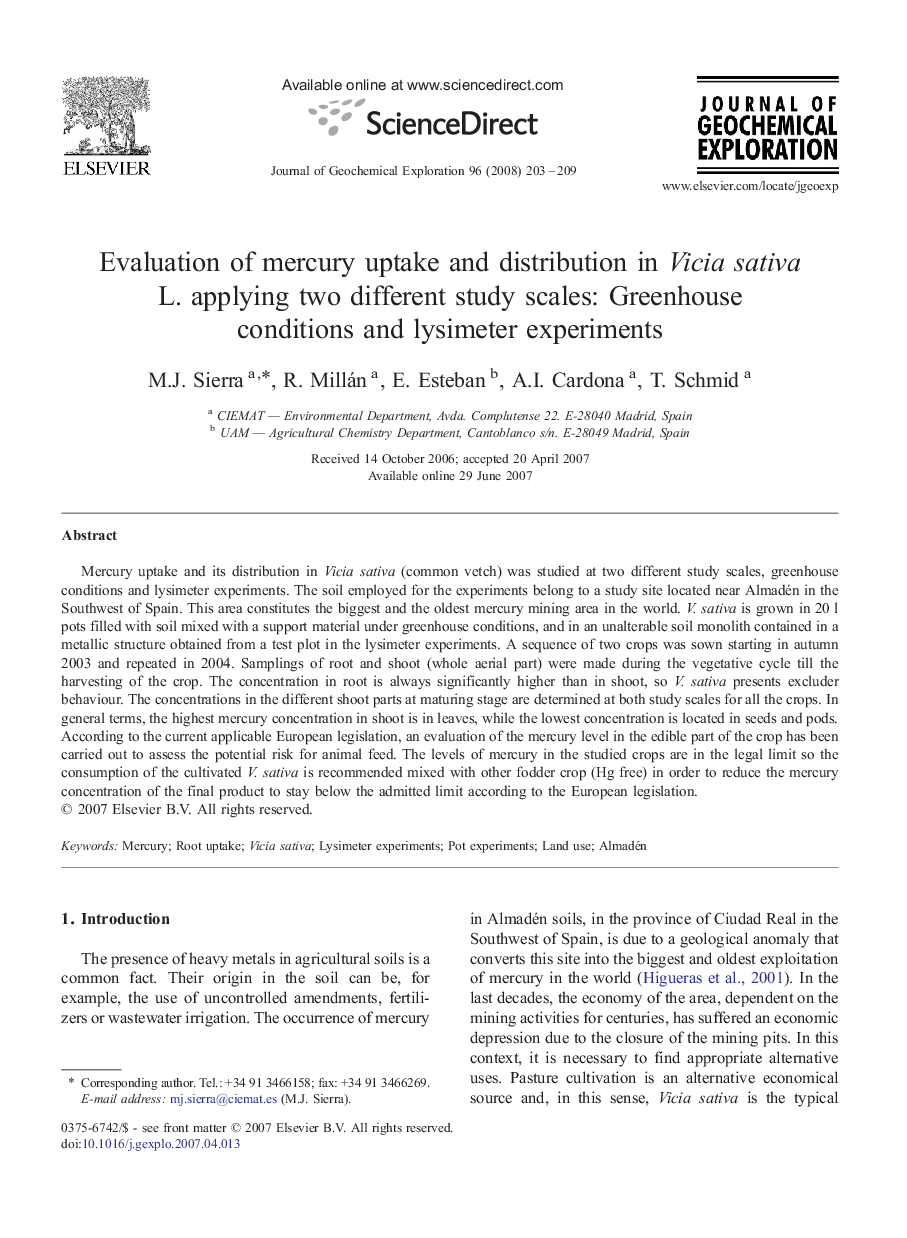| Article ID | Journal | Published Year | Pages | File Type |
|---|---|---|---|---|
| 4458306 | Journal of Geochemical Exploration | 2008 | 7 Pages |
Mercury uptake and its distribution in Vicia sativa (common vetch) was studied at two different study scales, greenhouse conditions and lysimeter experiments. The soil employed for the experiments belong to a study site located near Almadén in the Southwest of Spain. This area constitutes the biggest and the oldest mercury mining area in the world. V. sativa is grown in 20 l pots filled with soil mixed with a support material under greenhouse conditions, and in an unalterable soil monolith contained in a metallic structure obtained from a test plot in the lysimeter experiments. A sequence of two crops was sown starting in autumn 2003 and repeated in 2004. Samplings of root and shoot (whole aerial part) were made during the vegetative cycle till the harvesting of the crop. The concentration in root is always significantly higher than in shoot, so V. sativa presents excluder behaviour. The concentrations in the different shoot parts at maturing stage are determined at both study scales for all the crops. In general terms, the highest mercury concentration in shoot is in leaves, while the lowest concentration is located in seeds and pods. According to the current applicable European legislation, an evaluation of the mercury level in the edible part of the crop has been carried out to assess the potential risk for animal feed. The levels of mercury in the studied crops are in the legal limit so the consumption of the cultivated V. sativa is recommended mixed with other fodder crop (Hg free) in order to reduce the mercury concentration of the final product to stay below the admitted limit according to the European legislation.
